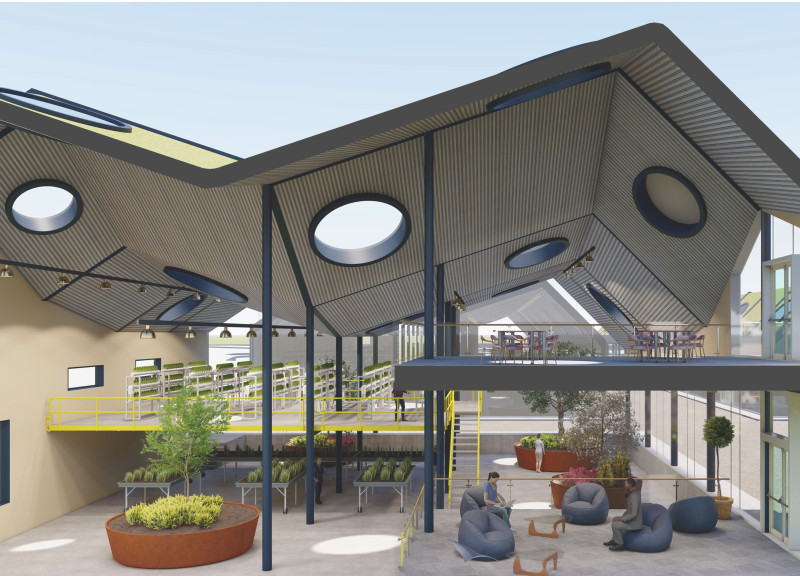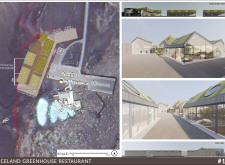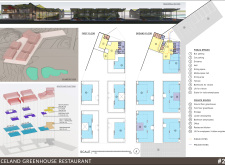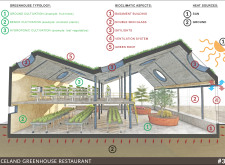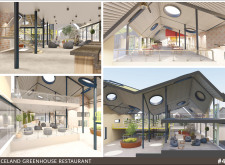5 key facts about this project
The overall architecture showcases a modern interpretation of traditional greenhouse design, featuring large glass facades and interactive growing spaces. With an emphasis on creating a visual and physical connection between patrons and food production, the design promotes a unique concept that enhances the dining experience through education and engagement in agricultural methods.
Innovative Greenhouse Integration
This project distinguishes itself from typical restaurant designs through its integration of hydroponic systems within the dining areas. Guests are not only served meals but can observe the process of food growing in real time. This transparency fosters a deeper understanding of food sourcing and promotes sustainable practices. The architectural layout includes dedicated zones for dining, community events, and active growing spaces that engage visitors in a multi-sensory experience, emphasizing the importance of local food systems.
Sustainable Material Choices
The design employs a range of sustainable materials that contribute to energy efficiency and environmental stewardship. The use of double-skin glass allows for natural light penetration and thermal regulation, minimizing energy use throughout the year. Green roof systems enhance insulation while supporting local biodiversity. Additionally, the materials and systems are selected for their low impact on the environment, underscoring the project's commitment to ecological sustainability.
For a comprehensive understanding of this architectural project, including detailed architectural plans and sections, explore the full project presentation. This examination will offer greater insight into the unique architectural ideas and design elements that define the Iceland Greenhouse Restaurant.


